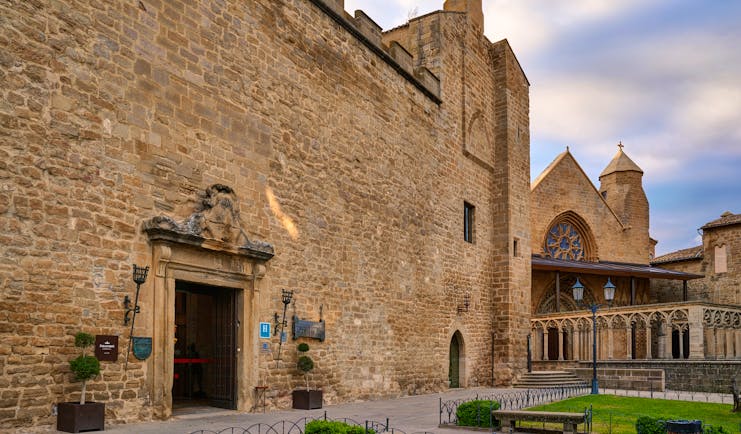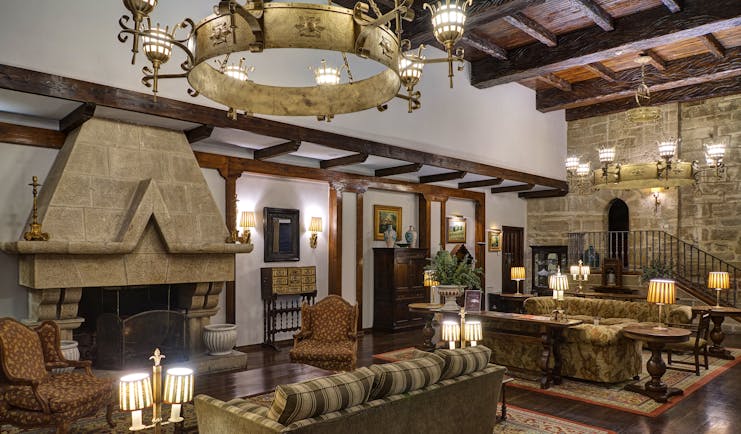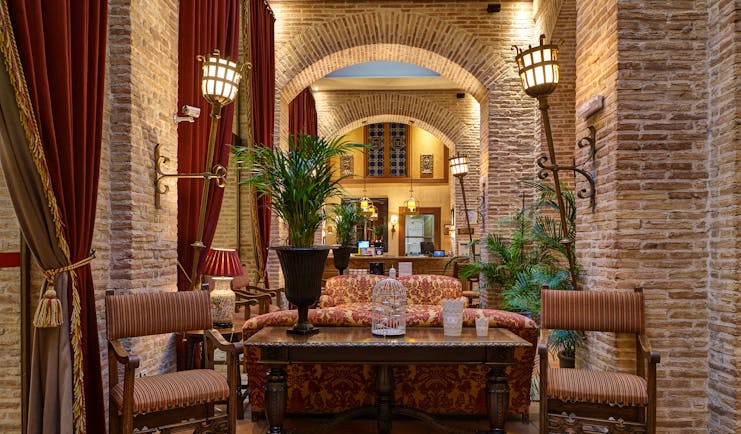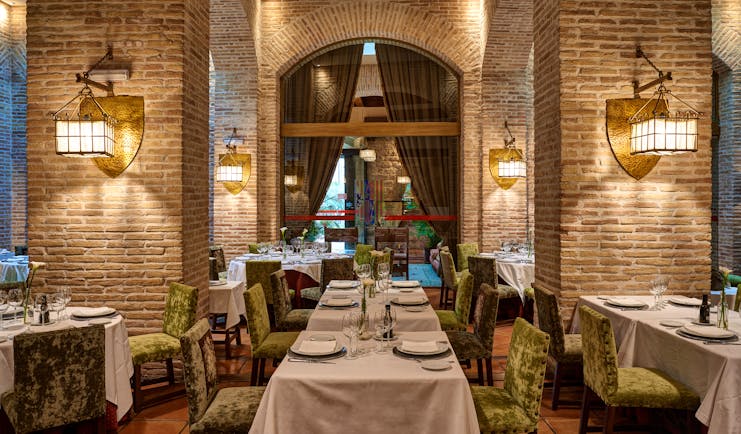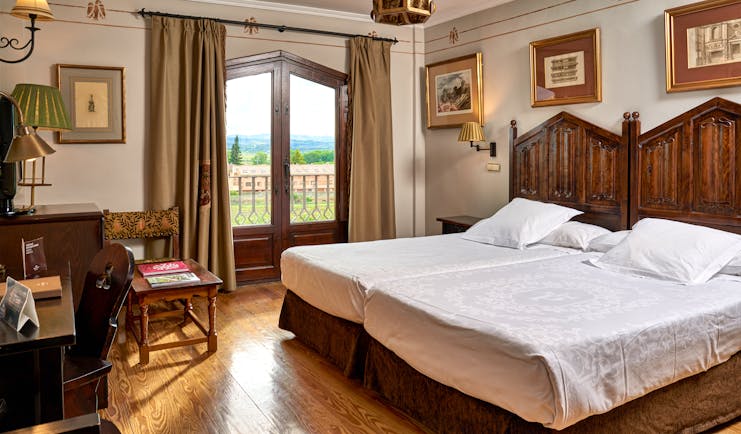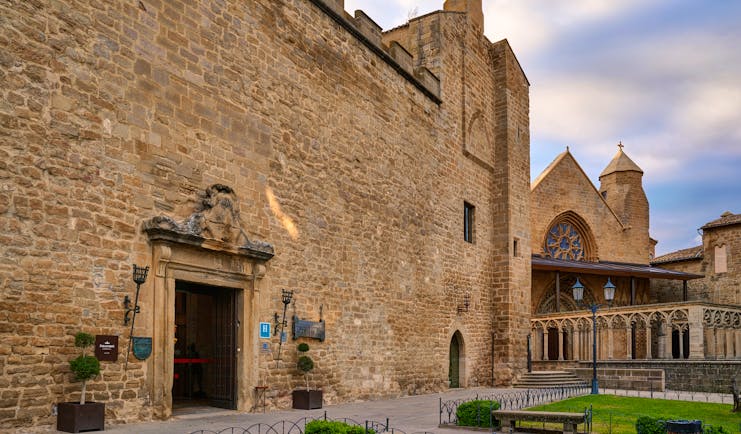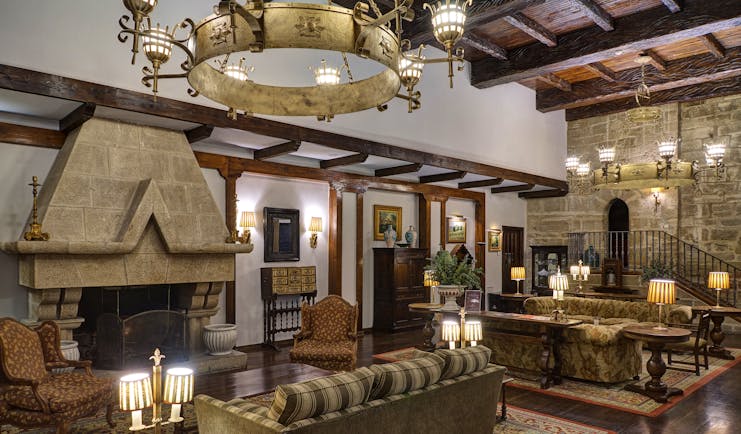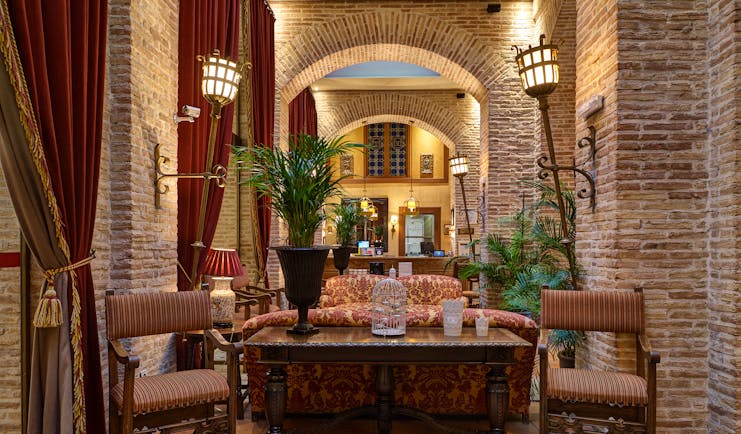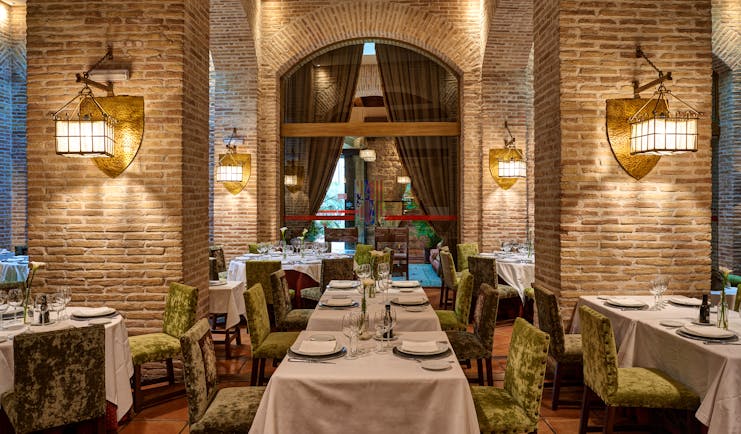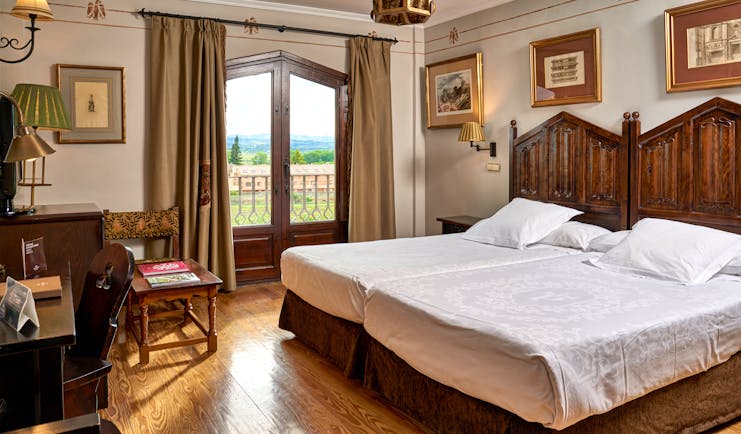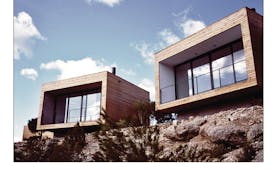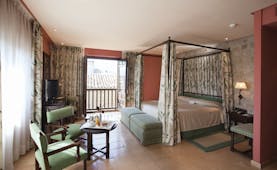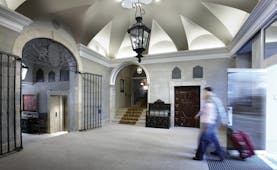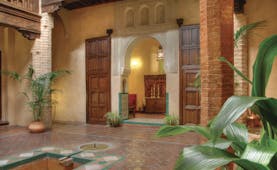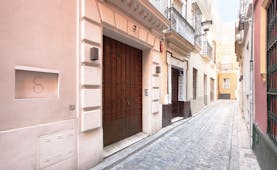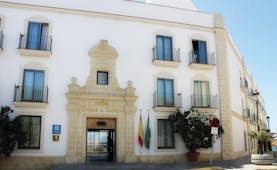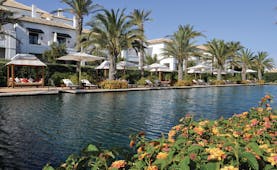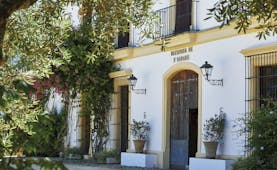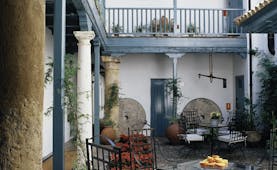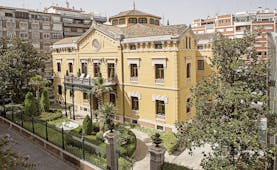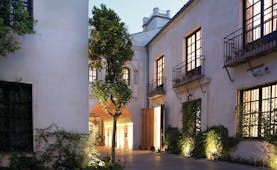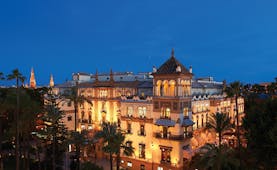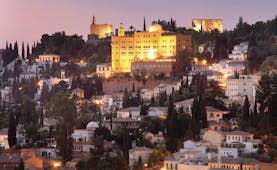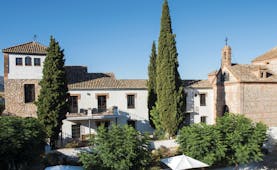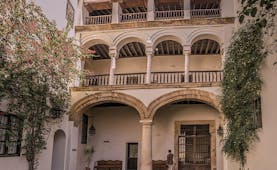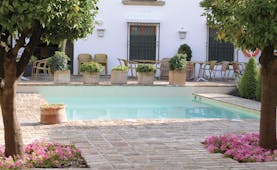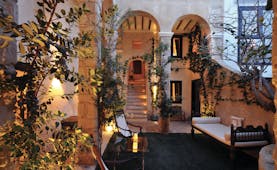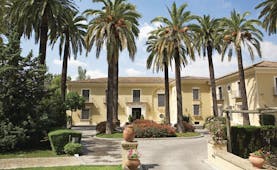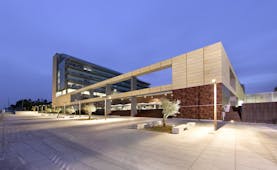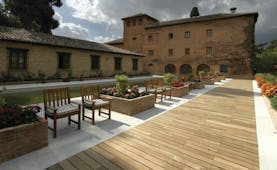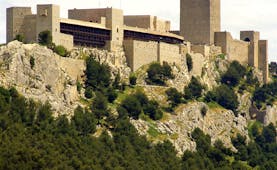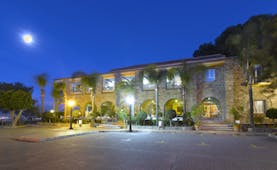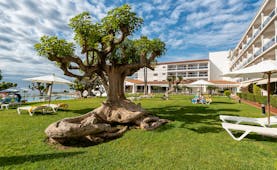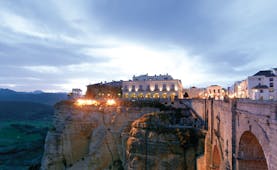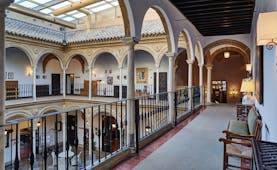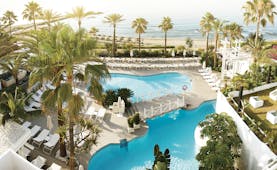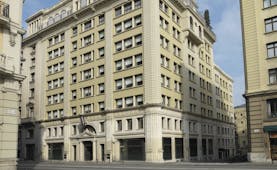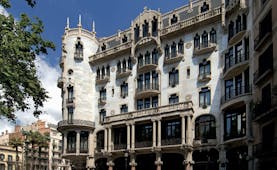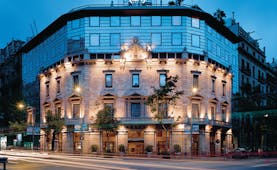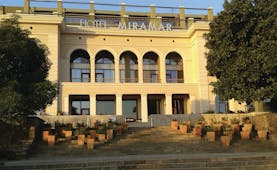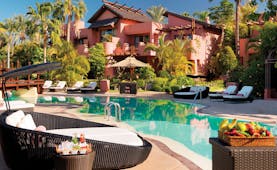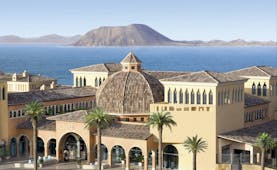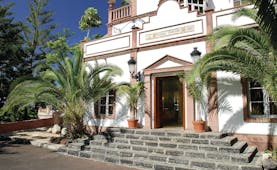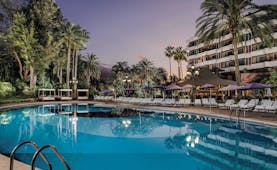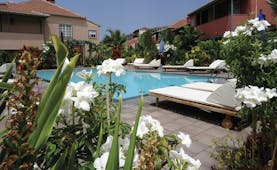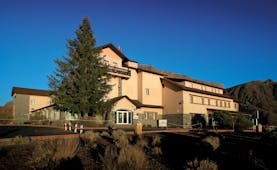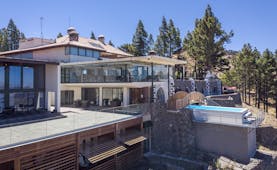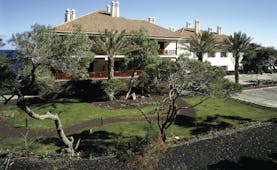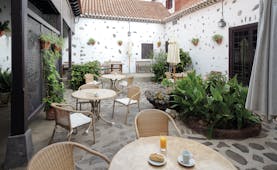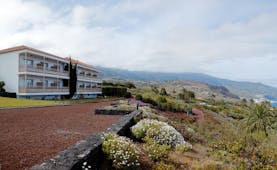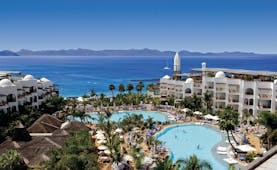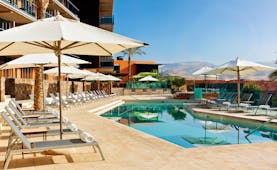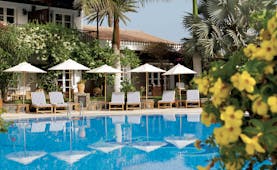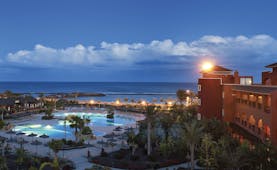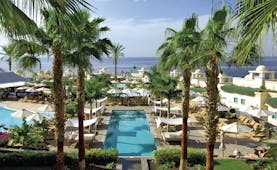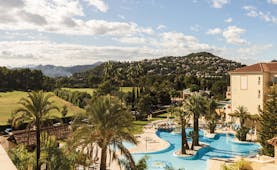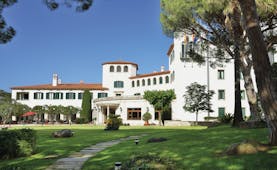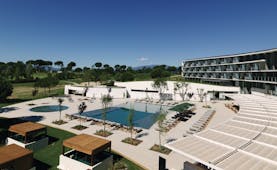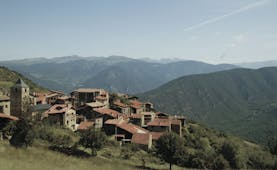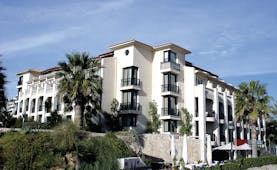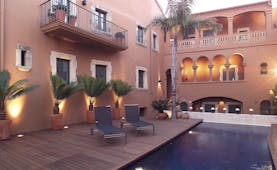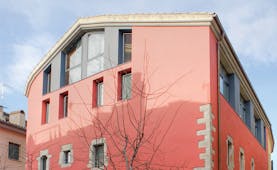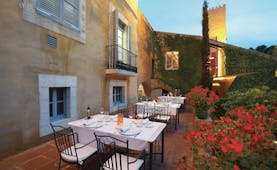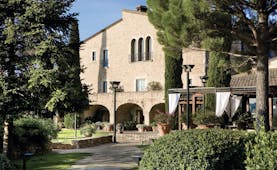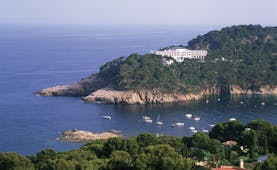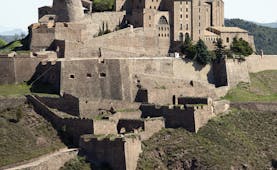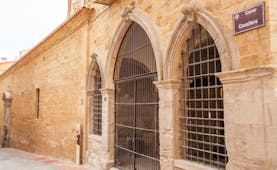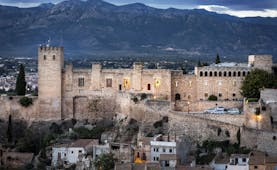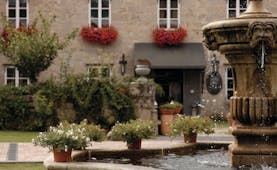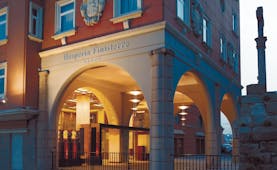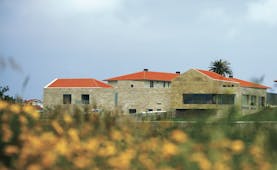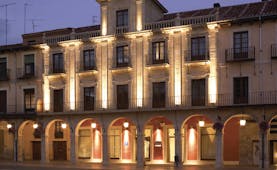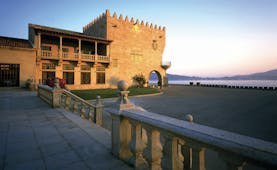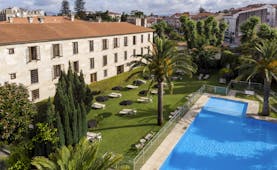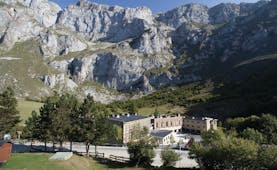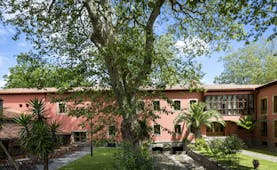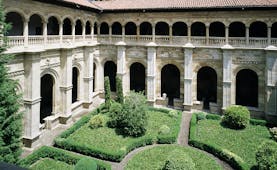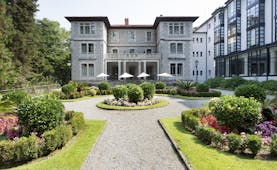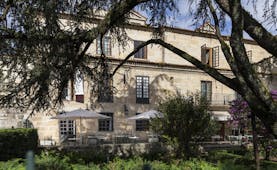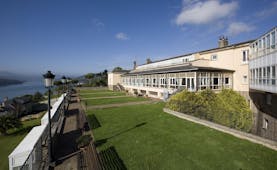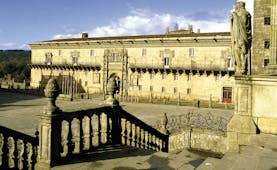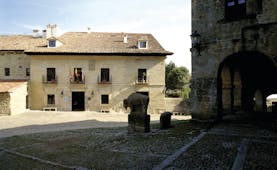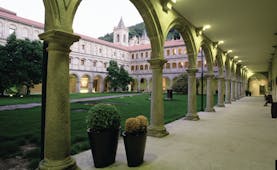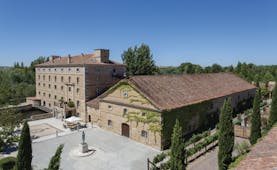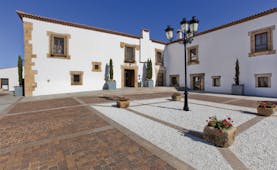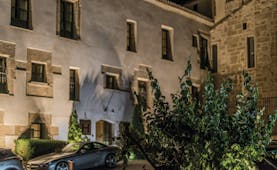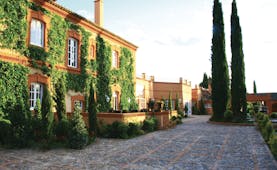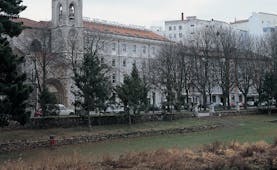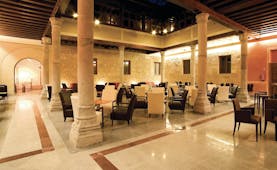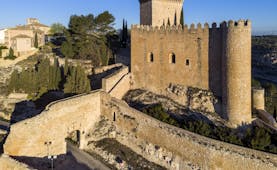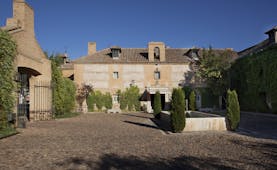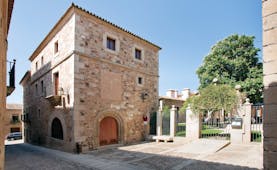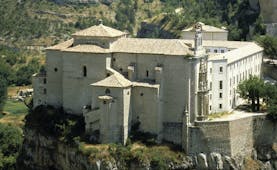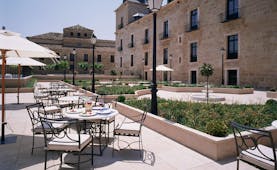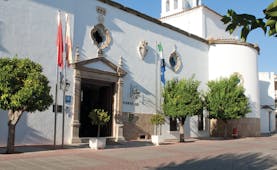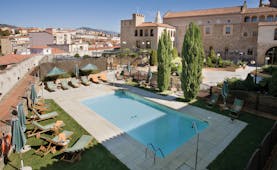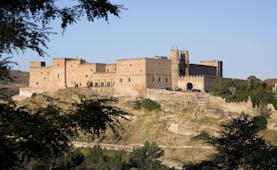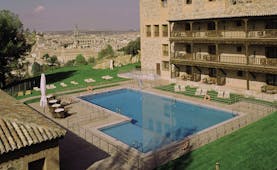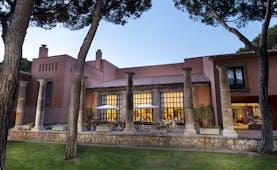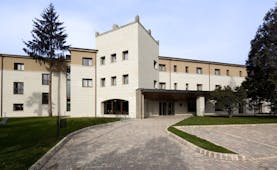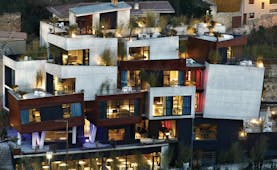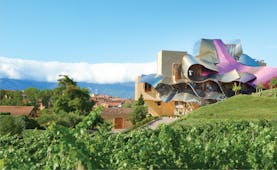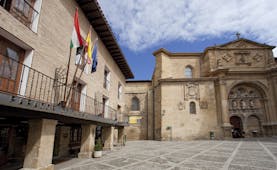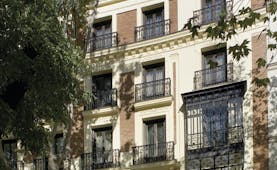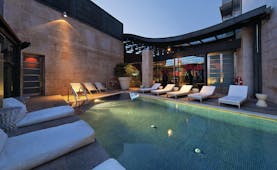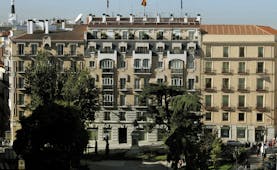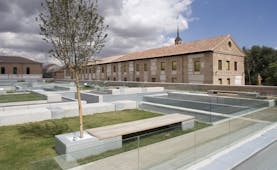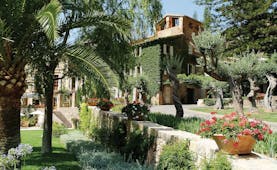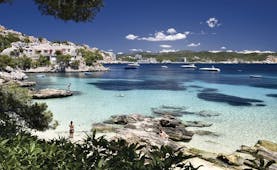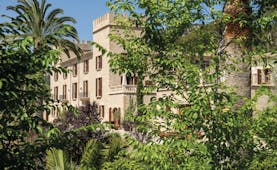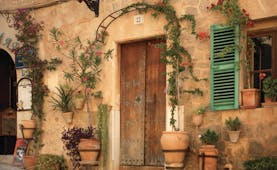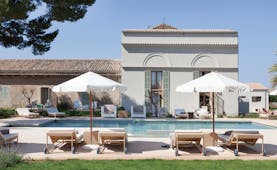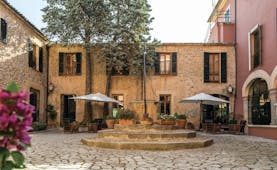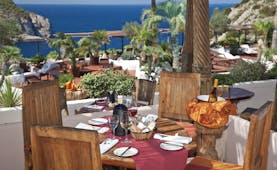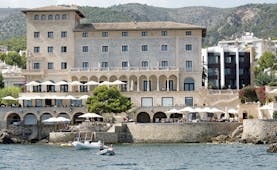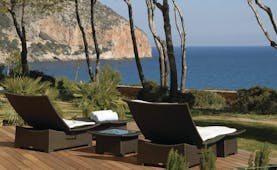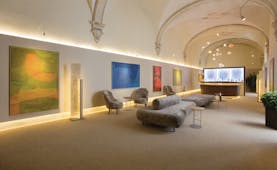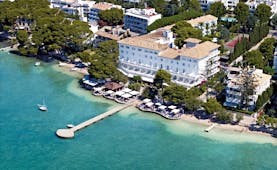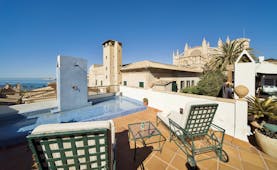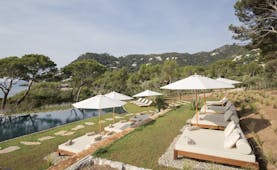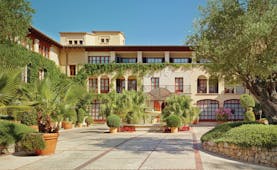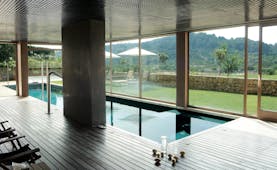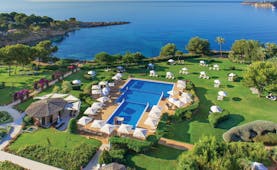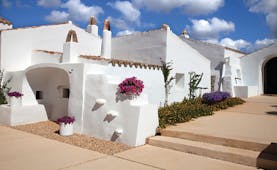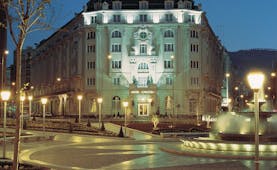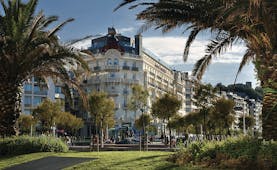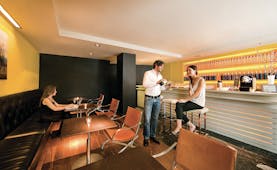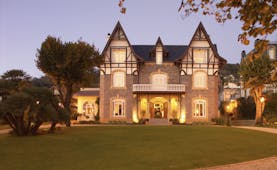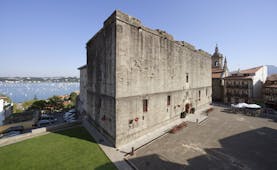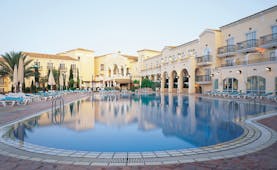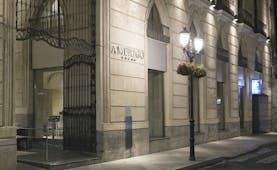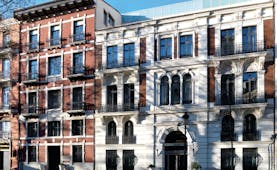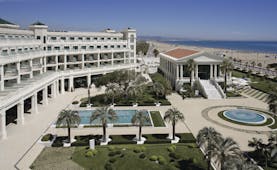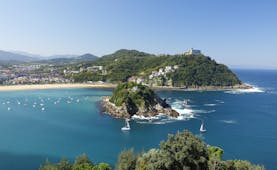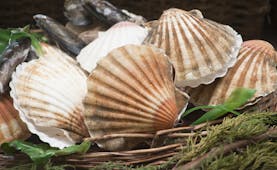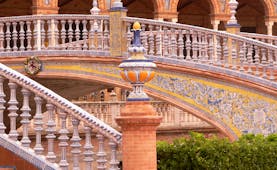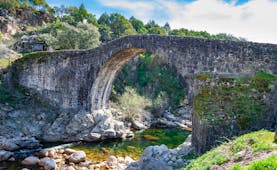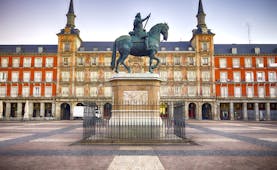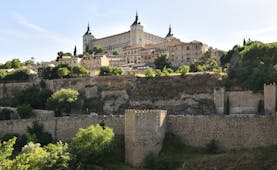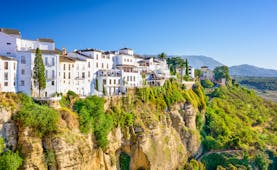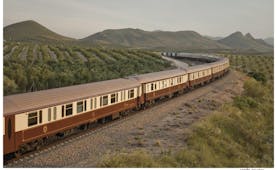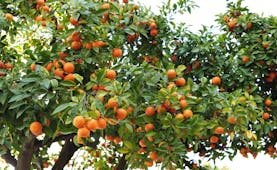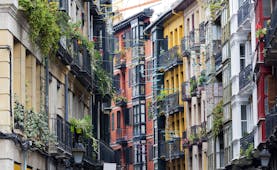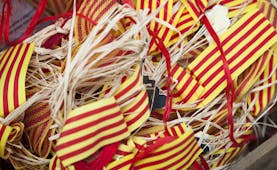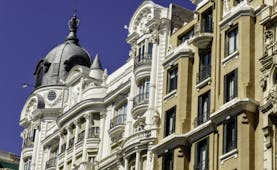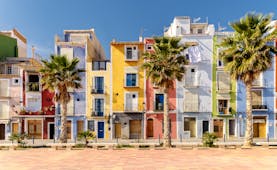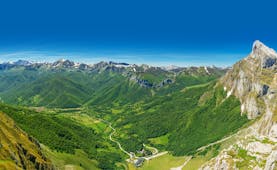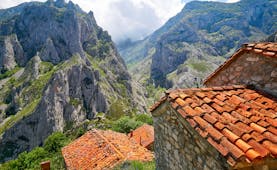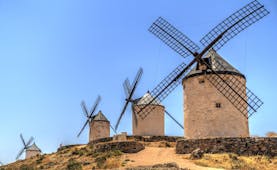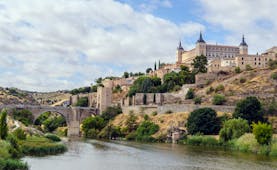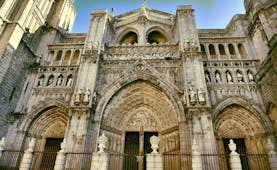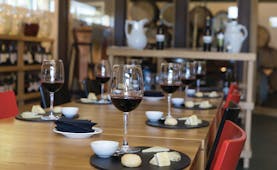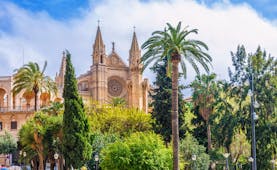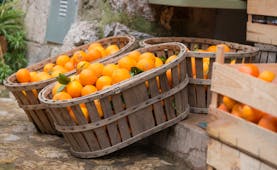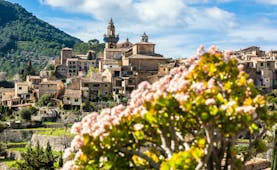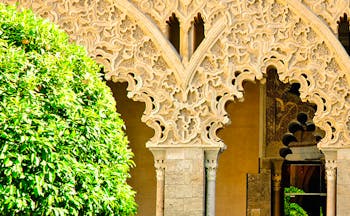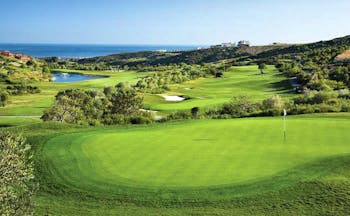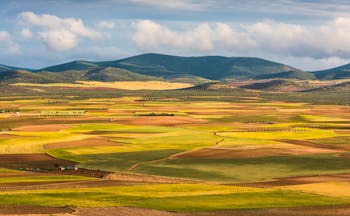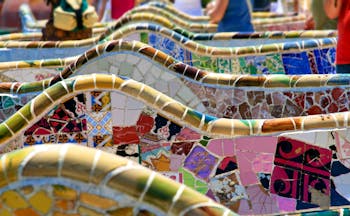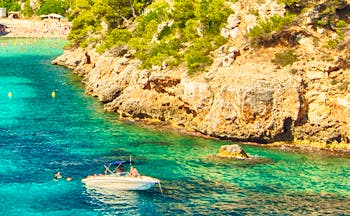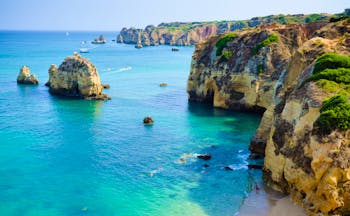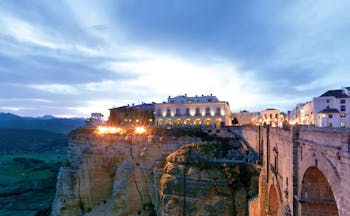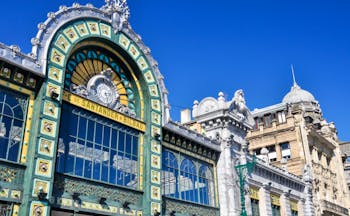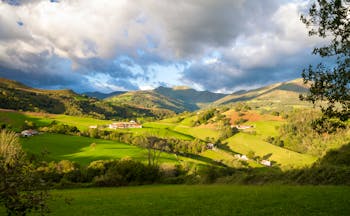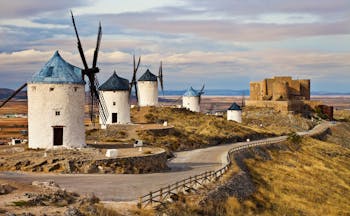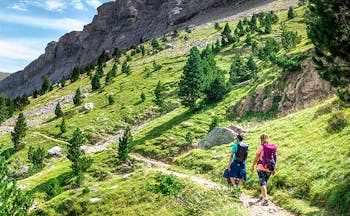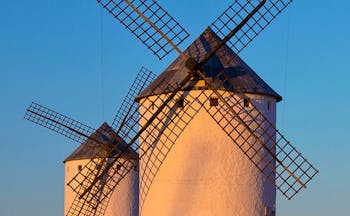Luxury bespoke hotel holidays to the Parador de Olite, near Pamplona
Facts in brief
Official star rating 3
Location The hotel is located in the centre of Olite, 40 km south of Pamplona.
Annual opening Open all year
Closest airport Bilbao
Distance from airport 205 km
Closest railway station Olite / Erriberri
Distance from railway station 400 m
Hotel facilities and services
Restaurant, bar, gift shop, parking.
Out and about nearby
Olite is best known for its medieval buildings including the Royal Palace, churches of Santa Maria and San Pedro and the medieval galleries. The region is particularly good for sampling local wines and a visit to the 15th century Bodegas Carricas is recommended. Nearby you will also find the historic city of Pamplona, renowned for the “running of the bulls” festival in July, and the lower Pyrenees for mountain sports.
Sports nearby
Hiking, birdwatching.
We particularly loved the Hotel del Sogno on Lake Garda for its character, beauty and amazing views. Great service too from the reception staff. Also they gave us great recommendations for restaurants.Mr and Mrs S, June 2023
Holiday price guide Sample prices are per person based on two people sharing a Standard double room for 3 nights for a fly-drive holiday
From about
£595
Holiday Code EXH1646
The prices displayed here are a guide only. Each holiday price will be tailor-made at the time of booking to reflect all actual costs including up-to-date special offers.
Call us on 01392 441245
Luxury bespoke hotel holidays to the Parador de Olite, near Pamplona
Visitors to the Parador de Olite are drawn by the fascinating history and architecture of this incredible building. The hotel is located within a section of the majestic palace-castle of Olite, within stone walls which conceal medieval treasures. Guests will be amazed by the preservation of original features including beautiful arcades and stained-glass windows in the dining room. The main guests’ lounge has a huge stone fireplace, wrought iron chandeliers and even a suit of armour. The castle is intricately linked to the former Kingdom of Navarra and its turbulent history; the region has been inhabited by Vascons, the Moors, the French and eventually became part of Spain in 1512. Accommodation is simple but comfortable with 43 guestrooms in total. These are tastefully furnished in keeping with the history of the building and many of the rooms have balconies with views over the pine woods. There is a restaurant at the Parador de Olite where guests can sample delicious local ingredients and dishes including Navarre asparagus, piquillo peppers, artichokes and pocha beans. Regional specialities include cordero al chilindrón (lamb in a peppery, tomato sauce) and bacalao ajoarriero (cod in garlic). Those with a sweet tooth should certainly try canutillos (little pastry tubes filled with cream) and leche frita (a deep-fried, cinnamon dessert a little akin to donuts). Olite is a great base for exploring the wines and vineyards of Navarra and the hotel’s concierge can help to arrange visits. Within 45 km you will also find the Monastery of Oliva and city of Pamplona, famed for the San Fermín celebrations in July where bulls run the streets. Guests visiting Olite in August may be lucky to catch the Medieval Festival where the town fills with kings, princesses, magicians and arches to re-live life the Middle Ages. We recommend the Parador de Olite to travellers interested in historical buildings for a short stay as part of a longer touring holiday through northern Spain.
Room descriptions
Parador de Olite has 42 rooms, each with private bathroom, air conditioning, heating, safe and mini-bar, internet connection, television, telephone and hairdryer. The hotel has one accessible room.
We particularly loved the Hotel del Sogno on Lake Garda for its character, beauty and amazing views. Great service too from the reception staff. Also they gave us great recommendations for restaurants.Mr and Mrs S, June 2023
Holiday price guide Sample prices are per person based on two people sharing a Standard double room for 3 nights for a fly-drive holiday
From about
£595
Holiday Code EXH1646
The prices displayed here are a guide only. Each holiday price will be tailor-made at the time of booking to reflect all actual costs including up-to-date special offers.
Call us on 01392 441245
Luxury bespoke hotel holidays to the Parador de Olite, near Pamplona
The journey and how you get there
For a holiday to the Parador de Olite, our clients usually hire a car from Bilbao airport and include the hotel as part of a fly-drive touring holiday. We include flights from London and a hire car, depending on what you would like to do and what is most appropriate to your overall journey.
Additional information
Children: An extra bed for a single child can be added in most room types.
Other information: Guests arriving by car can unload luggage at the main entrance to the hotel, however the car park is 150 yards away.
We particularly loved the Hotel del Sogno on Lake Garda for its character, beauty and amazing views. Great service too from the reception staff. Also they gave us great recommendations for restaurants.Mr and Mrs S, June 2023
Holiday price guide Sample prices are per person based on two people sharing a Standard double room for 3 nights for a fly-drive holiday
From about
£595
Holiday Code EXH1646
The prices displayed here are a guide only. Each holiday price will be tailor-made at the time of booking to reflect all actual costs including up-to-date special offers.
Call us on 01392 441245
Luxury bespoke hotel holidays to the Parador de Olite, near Pamplona
About Navarre and Aragon
The regions of Navarre and Aragón offer the opportunity to explore a largely unsung and under-visited region which stretches almost half the length of Spain. Its reaches include the famed city of Pamplona, best known for its daredevil bull-running in July, medieval castles and Romanesque churches and the exquisite Mudéjar architecture found across the region with the finest example in Zaragoza. Navarre was a medieval Basque kingdom and the Euskadi/Basque language is still recognised as co-official with Spanish in several areas. To the north of the regional capital lies the mountainous border with France, a vivid landscape of forested slopes and lush valleys whilst the centre of Navarre consists of wide basins and gentle hills, carefully tended with crops, livestock and woodlands. The Ebro, the second longest river in the Iberian Peninsula, runs through the southern area of Tudela and leads westwards into neighbouring Aragón. Visitors to Aragón will find a vast landscape of picturesque ancient villages, rolling green foothills and arid plains in the southern reaches of Teruel. Above all, Aragón is set apart from the rest of Spain by the majesty of the Pyrenees which mark its northern border. The three highest peaks of this chain, Pico Aneto, Pico Posets and Monte Perdido, are all found within the borders of Aragón, giving some of Spain’s finest hiking and adventure sports. Visitors to Navarre and Aragón will find that the variation in climate is just as dramatic as the changing landscape with often long, harsh winters and hot, balmy summers. Many of our hotels in Navarre and Aragón are housed in significant historic buildings, providing guests with elegant and comfortable accommodation options. The regions of Navarre and Aragon are particularly well suited for touring holidays in combination with different areas of Spain such as the Spanish Basque Country, Catalonia and Eastern Spain or the Heart of Spain.
Highlights of Navarre and Aragon
The Gothic cathedral in Pamplona (Iruña), a major stop on the Way of St James pilgrimage route through northern Spain, as well as the opulent Palacio del Gobierno de Navarra. The town of Tudela with its 13th century bridge across the River Ebro and beautiful old town, in addition to the otherworldly landscape of the nearby Bardenas Reales National Park. The charming town of Sos del Rey Católico, birthplace of Fernando of Aragón, with the grand Palacio de Sada and Church of San Esteban. The riverside Cathedral-Basilica of Our Lady of the Pillar in Zaragoza, the second largest church in Spain, celebrated for its eleven brightly coloured domes and elegant Baroque façade. Classic examples of Mudéjar architecture which combines Gothic and Islamic elements, some of the best examples of which are in the high-altitude town of Teruel in southern Aragón. Tranquil religious houses including the Cistercian Monastery de la Olivia and isolated Monastery of San Salvador de Leyre. Perhaps the most unique of these buildings is the Monastery of San Juan de la Peña in Aragón; set under an overhanging rock, this monastery was a supposed guardian of the Holy Grail. Formidable castles such as the Castillo de Loarre where visitors can explore the ramparts, dungeons and keep. The medieval old town of Huesca topped with its impressive gothic cathedral and nearby Castle of Montearagón. The stunning landscape of Ordesa National Park draws guests with its well-marked hiking trails, native wildlife and scenic “Horse’s Tail” waterfall. The small village of Torla is the gateway to the park and is a popular stopping point for visitors. Historic towns and villages, unspoilt by mass tourism, such as Estella (Lizarra), Olite, Albarracín, Ujué and Calahorra.
Festivals in Navarre and Aragon
January: Festive processions on the 5 January, marking the arrival of the Three Kings with huge floats. February: Festival of Santa Águeda in Alsasua. February/March: Carnivals celebrating the start of Lent, one of the best is in the town of Bielsa. March/April: Easter celebrations such as Las Tamborradas in the Aragonese town of Hijar and El Volatín in Tudela. Festival of Dance with performances throughout spring weekends in Pamplona. April: Traditional pilgrimage of San Marcos in Ujué on 25 April. July: San Fermín, the famous bull-running festival in Pamplona. International music festival of Navarre and also another in the medieval castle at Aínsa. Traditional Romero pilgrimage in Yebra de Basa. Tudela’s festival in honour of their patron saint, Santa Ana. July/August: Pyrenean Folk Festival in Jaca. Pyrenees South International Festival of Cultures in Huesca. Classical Theatre Festival in Olite. August: Medieval festival in Olite with market and historical demonstrations of trade and fashion. September: La Morisma, a re-enactment of an 8th century battle between Christians and Moors in Aínsa. October: Fiestas de Pilar in Zaragoza, a week-long celebration in honour of the city’s patron saint. November: Cinema Festival in Pamplona. December: El Olentzero - Christmas Eve celebrations across Pamplona and Navarre include this traditional Basque character who comes late at night to drop off presents for children.
Gastronomy in Navarre and Aragon
Cuisine across these regions is varied with tastes to suit everyone’s palate, thanks to the vast landscape and products grown here. Whilst there is no coastline, there is great choice with plentiful meat and game, locally grown crops and vegetables and fresh-water fish. Cuisine is based on traditional recipes which have been handed down through generations and modernised. In Aragón you will find menus featuring stews, ternasco (roasted lamb) and jamón from Teruel. Not all Aragonese cooking is based on meat with river-caught fish like trout and eel also used. Try local olive oil from Empeltre, asparagus from the banks of the Ebro and sweet onions from Fuentes. Fruits grown in Aragón include pears, apples, cherries and plums and are exported throughout Spain. The gastronomy in neighbouring Navarre is not dissimilar yet offers additional treats such as black truffles from the Allín valley and woods of the Lóquiz mountains. Dining out in Pamplona is a treat with restaurants to match all budgets and styles, from local bars to Michelin-starred destinations. Whatever your choice, be sure to try the local wines as well as the Navarran spirit pacharán, made with sloe berries and anise.
Climate in Navarre and Aragon
This part of Spain has a mixed climate which is inextricably linked with the contrasting landscape. The northern areas are amongst the coldest in Spain with the winter months of November to April often bringing freezing temperatures, snow and making mountain roads impassable. On the other hand, the arid plains of southern Aragón can be very hot in the summer months with residents and visitors alike spending the warmest hours relaxing inside. Rain falls throughout the year in the northern areas, although with less frequency throughout the summer. We recommend speaking to one of our Personal Travel Specialists about your interests in order to suggest the best time for your visit.

